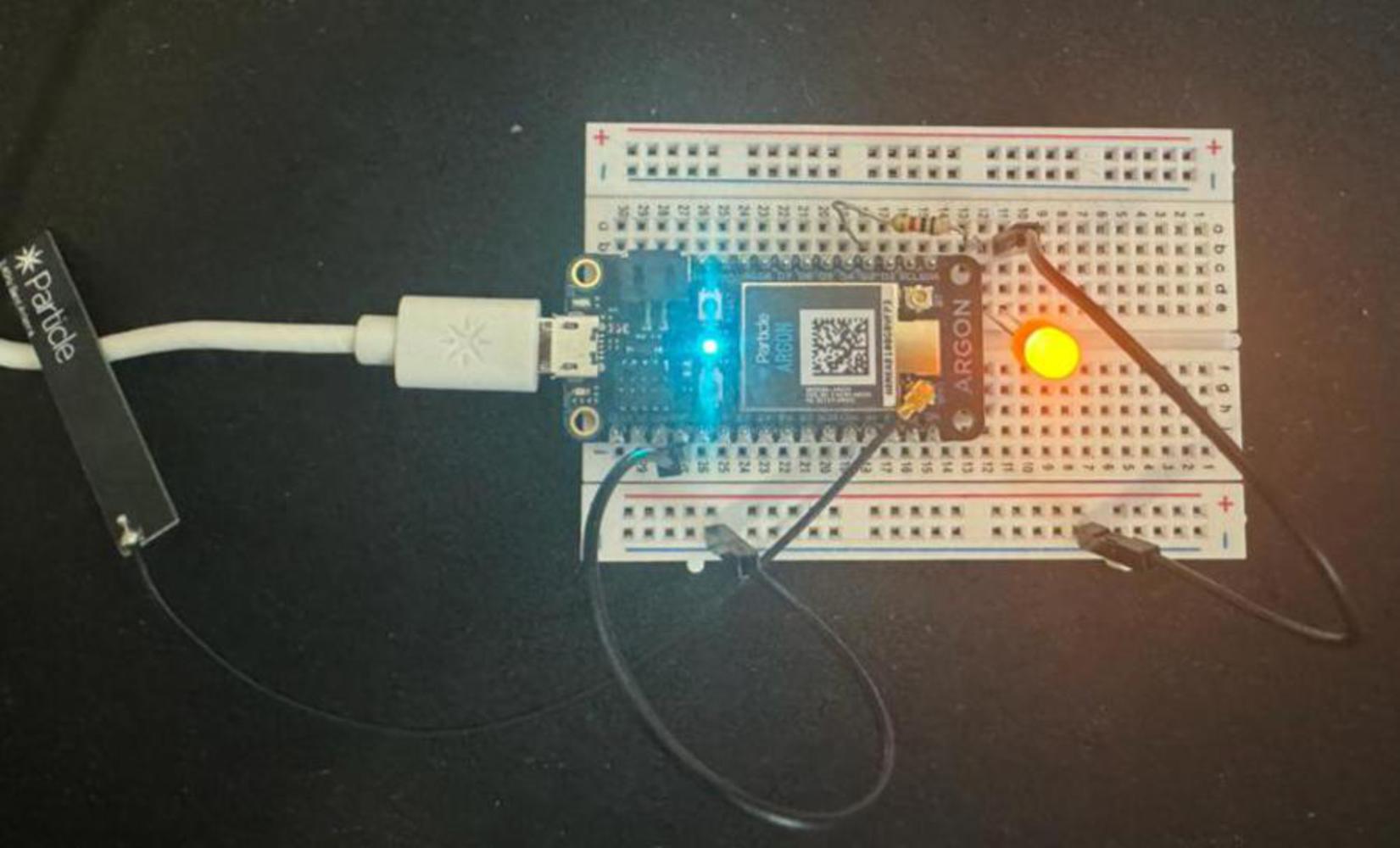Project Summary:
In this project, I completed a series of IoT projects using Particle's Argon microcontroller platform to create a connected internet appliance. I first modified a cloud function to make an LED blink three times upon activation. Next, I enhanced the function to accept input for controlling the number of LED blinks and creating a sequence of five blinks with a delay between sequences. Lastly, I added a second LED to my setup and created a program to alternate, with a minor delay, the blinking of the two LEDs. For these exercises, I added the cloud function for the remote control. I also integrated it with Particle's REST API by pulling my Device ID and creating an access token, using the "curl" terminal command to place my appliance onto the internet.
In each below exercise, the process and outcome are explained.
